



The domestic workforce, mostly women from marginalized communities, faces exploitation due to informal work and lack of rights. Denied fair wages and protection, they remain invisible. The Supreme Court directed the Centre to form an expert committee to draft a protective law.
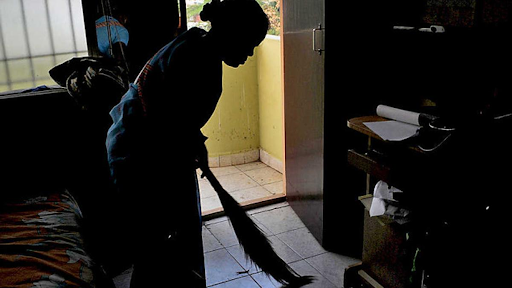
Copyright infringement not intended
Picture Courtesy: THEHINDU
The Supreme Court directed the Centre to draft a law protecting domestic workers’ rights and form a committee to submit its framework report within six months.
According to the International Labour Organization (ILO), domestic workers are those who perform work in or for a private household.
They are a critical part of the care economy, providing essential services that enable others to participate in the formal workforce.
Numbers and Demographics
Official figures from the National Sample Survey Office (NSSO, 2012) indicate 3.9 million domestic workers, with 2.6 million being women.
Estimates by the International Labour Organisation (ILO) place the count anywhere between 20 million and 90 million workers. (Source: The Hindu)
Nearly 90% of domestic workers in India are women or children (especially girls), ranging from ages 12 to 75 and it is estimated that 25% among them are below the age of 14. (Source: NDWM)
A Bengaluru-based study in 2016 found 75% of domestic workers were from Scheduled Castes, 15% from OBCs and 8% from Scheduled Tribes. (Source: The Hindu)
Informal and Undervalued Work
Domestic work is largely informal, lacking formal recognition, contracts, and social security. It is undervalued and poorly paid due to being considered unskilled or a gendered role.
Shifting Workforce Dynamics
The Time Use Survey (TUS) 2024 by the National Statistics Office (NSO) indicates: women aged 15-59 spent less time on unpaid domestic services (305 minutes daily in 2024, down from 315 in 2019) and showed increased participation in paid employment (25% in 2024, up from 21.8% in 2019). (Source: PIB)
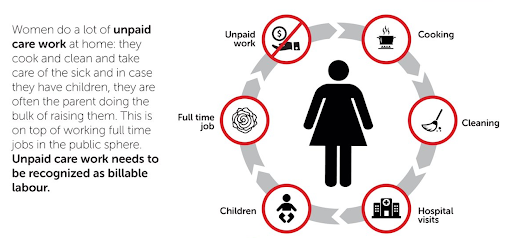
Legal Vacuum and Lack of Recognition
India lacks a national law for domestic workers, who are excluded from labor laws and lack legal protection as private homes aren't recognized workplaces.
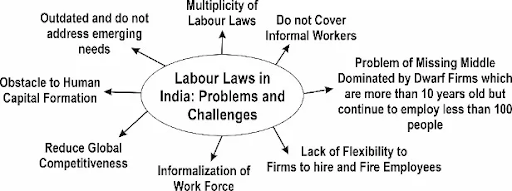
Exploitative Working Conditions
Job Insecurity and Informal Contracts
Most arrangements lack written contracts, job security, or legal protection, leading to arbitrary termination, wage theft, and a total lack of legal recourse.
Abuse, Harassment, and Discrimination:
Absence of Social Security
Most lack social safety nets like health insurance, provident funds, or old-age pensions, leaving them vulnerable during illness, emergencies, or in old age.
Exploitation by Placement Agencies
Many unregistered placement agencies exploit workers by charging high fees, providing false promises, and failing to ensure safe working conditions.
Child Labour and Trafficking
Child labor in domestic work persists despite being illegal, with minors trafficked from impoverished rural areas to cities by exploitative agencies.
Migration Challenges
Inter-state migrant domestic workers face challenges including language barriers, lack of support, and difficulty accessing rights and welfare across state lines.
Lack of Collective Bargaining Power
Lack of unionization leaves domestic workers vulnerable, unable to collectively demand better wages, conditions, or legal protections.
The Unorganised Workers’ Social Security Act, 2008
This Act included domestic workers but was largely ineffective due to weak implementation and lack of mandatory employer contributions.
It is now subsumed under the Code on Social Security, 2020, which aims to provide universal coverage but is yet to be fully implemented.
The Minimum Wages Act, 1948
Only about 12 states have set minimum wages for domestic workers. Enforcement is weak due to the informal nature of the work. (Source: The Hindu)
The Sexual Harassment of Women at Workplace (PoSH) Act, 2013
The Act includes domestic workers and mandates the formation of Local Complaints Committees (LCCs) at the district level. However, practical implementation is challenged at local body levels.
The Child Labour (Prohibition and Regulation) Act, 1986
The Act bans the employment of children under 14 in all occupations, including domestic work. However, enforcement remains a major challenge.
Draft National Policy on Domestic Workers (2019)
This draft policy remains unenacted. It proposes key reforms like mandatory registration, minimum wages, social security, and regulation of placement agencies.
State-Level Initiatives
States like Tamil Nadu and Kerala have established welfare boards that provide registered workers with benefits like pensions and educational assistance.
Karnataka's proposed Domestic Workers Bill, 2025, is a progressive step that mandates written contracts and employer contributions to a welfare fund.
ILO Convention 189 (2011)
This convention sets international standards for the rights of domestic workers. India voted in favour of it but has not yet ratified it, preventing its legal enforcement in the country.
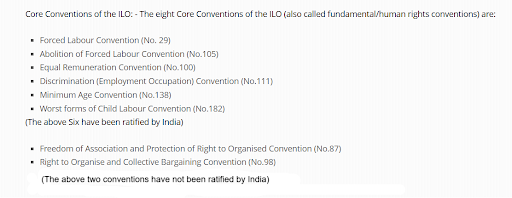
Enact a Comprehensive National Law: As directed by the Supreme Court, the government must enact a dedicated law that:
Ratify ILO Convention 189
India should ratify ILO Convention 189 to ensure national laws align with international standards, demonstrate commitment to decent work, and provide a strong framework for domestic workers.
Implement Universal Social Security
Fast-track the Code on Social Security, 2020. Mandate employer contributions for health insurance and provident funds, following Karnataka's model.
Strengthen Enforcement and Grievance Redressal:
Regulate Placement Agencies
Placement agencies must be registered, regulated, and held accountable for placed workers to prevent trafficking and exploitation.
Empower Workers
Inter-State Coordination
Improve inter-state coordination to protect migrant domestic workers' rights, ensuring portable social security and easy cross-border grievance redressal.
Undervalued domestic workers are vital to the economy. The Supreme Court's 2025 directive offers a historic chance for India to grant them dignity, rights, and protection through comprehensive law, ILO Convention 189 ratification, and a strong social security system.
Source: THEHINDU
|
PRACTICE QUESTION Q. Critically analyze the socio-economic vulnerabilities of domestic workers in India. 150 words |
Domestic workers in India, largely informal, lack a specific central law. However, existing laws apply, and new efforts like the draft National Policy and the Code on Social Security, 2020, aim to improve their legal and social security.
The central government has set minimum wage rates for unskilled workers, and the Code on Wages, 2019, aims for universal minimum wages. However, the actual implementation for domestic workers varies greatly by state and city.
The Unorganized Workers' Social Security Act, 2008, includes domestic workers under "unorganized workers," requiring states to establish welfare schemes for benefits such as life/disability insurance, health/maternity coverage, and old-age protection. Some states have created specific welfare boards.
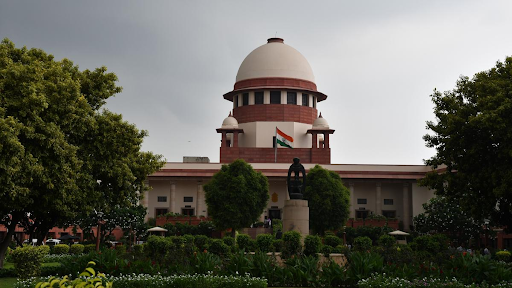
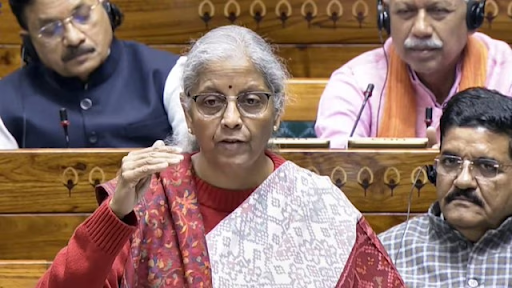
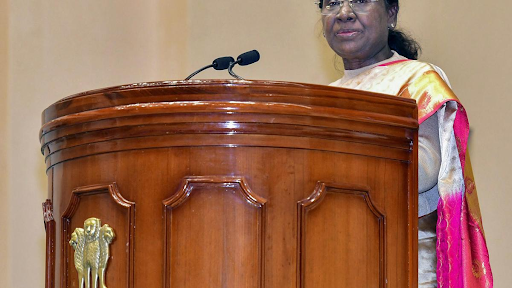
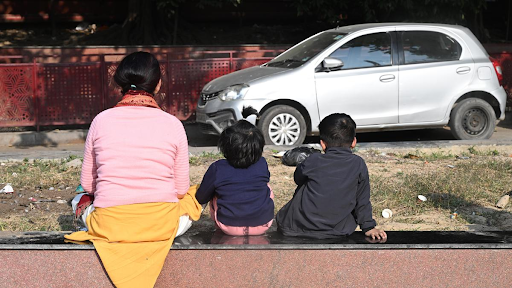

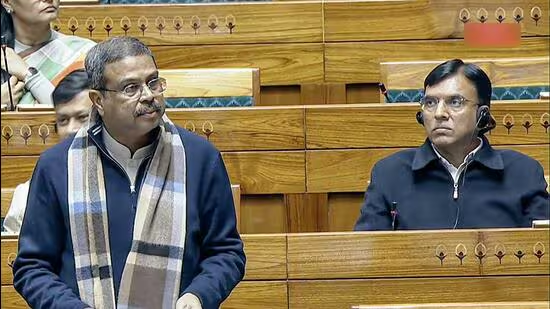

© 2025 iasgyan. All right reserved